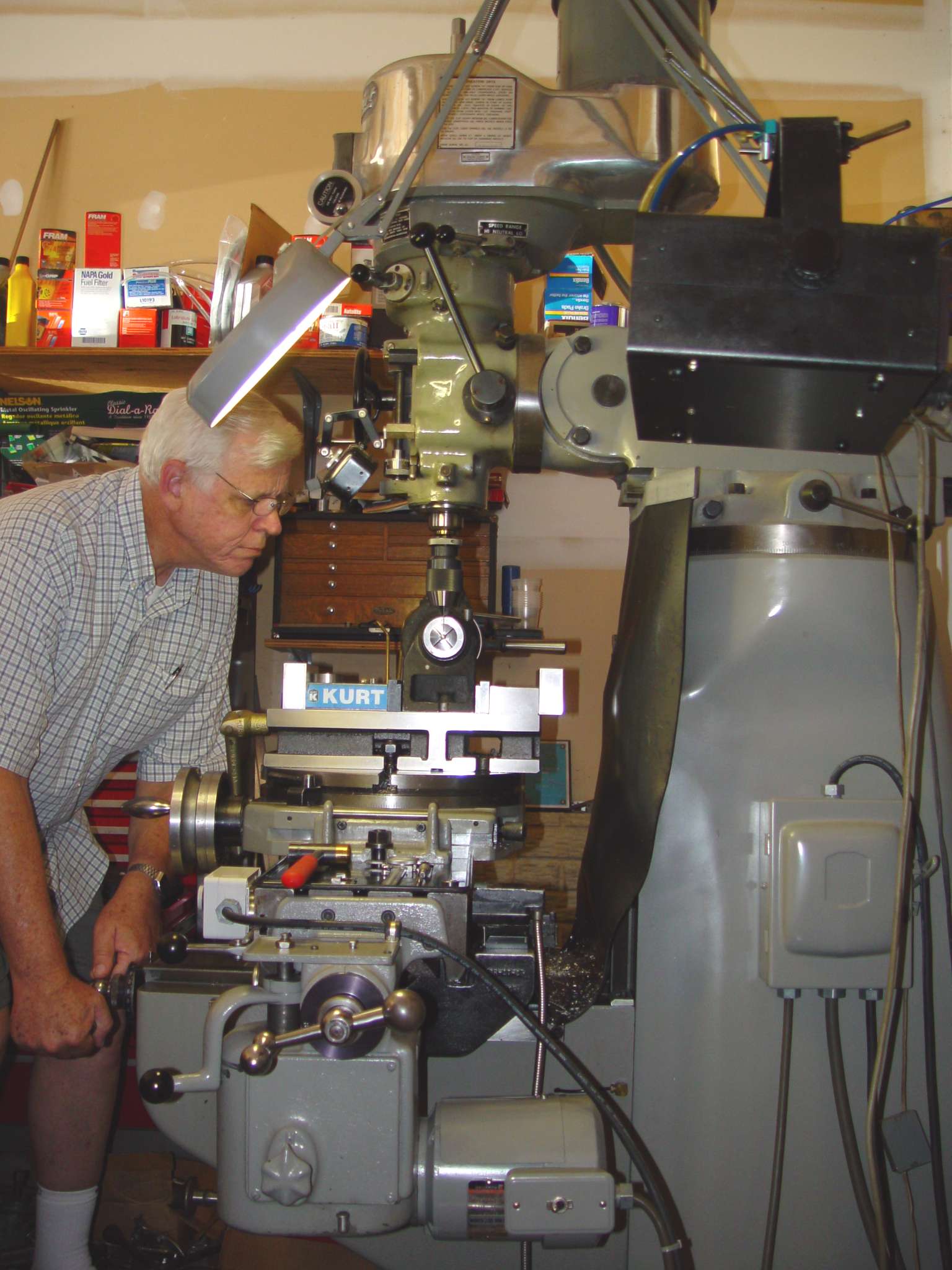Bridgeport Milling Machine
 Tim Allen of television's old Tool Time program would describe this as
a honkin' big drill press, and in some limited ways that's what it is. It has also been the
prototype lab mill for many years - for the very reason that it has extensive
flexibility. That flexibility is also a drawback for repetitive moving of large amounts
of metal (for that job you want significant power and rigidity,) but in a small quantity shop, the
Bridgeport is an excellent choice.
Tim Allen of television's old Tool Time program would describe this as
a honkin' big drill press, and in some limited ways that's what it is. It has also been the
prototype lab mill for many years - for the very reason that it has extensive
flexibility. That flexibility is also a drawback for repetitive moving of large amounts
of metal (for that job you want significant power and rigidity,) but in a small quantity shop, the
Bridgeport is an excellent choice.
Overshadowed for production work by larger, more massive machines, it still has a place in the model shop of
many firms because of its ability to be configured in so many different ways. It is a superbly accurate drill
press to be sure, but it can also be used to cut circles and rectangles, bore holes to .0001" accuracy, slit materials
with high precision, and accomplish any number of linear (straight line) fabrication motions for removing
material. Multiple knuckles permit complex angles to be accommodated with ease, at an expense of a small degree
of rigidity. For most of the low volume parts needed for the occasional radio restoration or original fabrication, this angle capability
is a huge advantage. This particular mill has an optional 15" diameter rotary table mounted on the X-Y table to
permit circular motion, sometimes called a fourth axis. It really isn't a substitute for a lathe, but for radiused arcs - like the dial
bezel on a BC-348 or other WWII short wave receivers - you can't do it any other way.
No, I'm not machining without safety glasses here - I was setting up a center drill
over a snap slide post and needed my reading glasses to get it spot on. Below is what it looks
like drilling that tiny hole for safety wire all the way through (after spotting with the center drill).

Return to Garaj Mahal
 Tim Allen of television's old Tool Time program would describe this as
a honkin' big drill press, and in some limited ways that's what it is. It has also been the
prototype lab mill for many years - for the very reason that it has extensive
flexibility. That flexibility is also a drawback for repetitive moving of large amounts
of metal (for that job you want significant power and rigidity,) but in a small quantity shop, the
Bridgeport is an excellent choice.
Tim Allen of television's old Tool Time program would describe this as
a honkin' big drill press, and in some limited ways that's what it is. It has also been the
prototype lab mill for many years - for the very reason that it has extensive
flexibility. That flexibility is also a drawback for repetitive moving of large amounts
of metal (for that job you want significant power and rigidity,) but in a small quantity shop, the
Bridgeport is an excellent choice.
